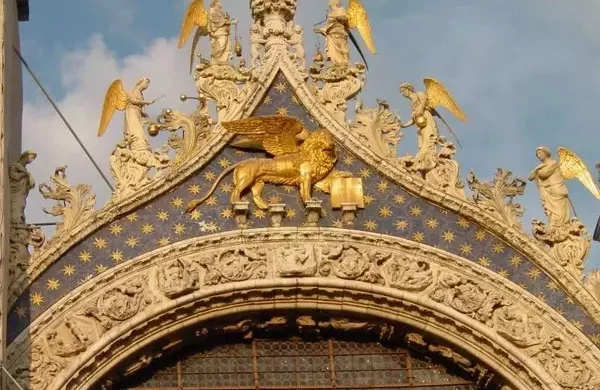
The remarkable story of St. Mark’s Basilica in Venice, revealing the hidden sarcophagus of St. Mark the Evangelist beneath an altar. The basilica, erected in the 9th century, and holds the remains brought from Alexandria by Venetian merchants.
Like this:
Like Loading...
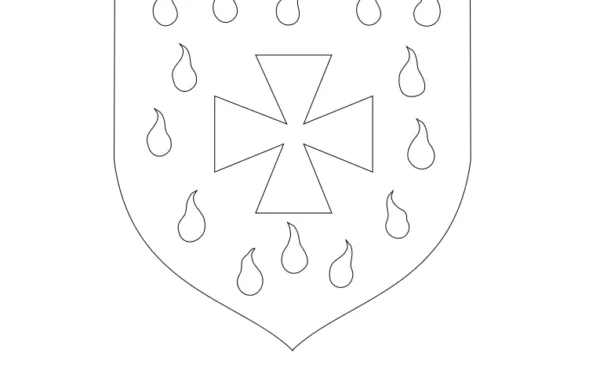
St. Anselm, born around 1033 A.D. in northern Italy, later part of the Kingdom of Burgundy, journeyed to Normandy in 1059. Influenced by Lafranc of Pavia, Anselm became the Abbot of Bec in 1078 and transformed it into a center of learning. A skilled administrator, he later succeeded Lafranc as the Archbishop of Canterbury in 1093. Anselm’s contributions extended to philosophy and theology, making him a notable figure in medieval history.
Like this:
Like Loading...
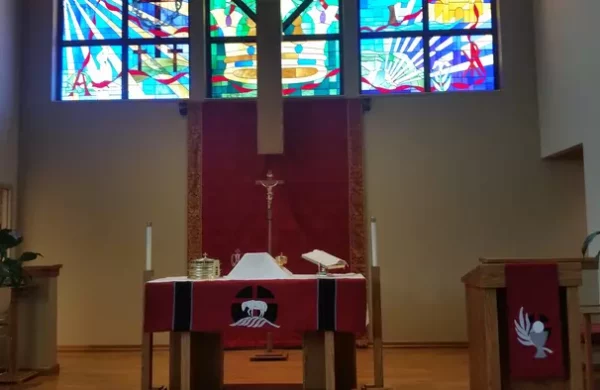
The Fabric chosen for the Dossal is the lovely and rich Litchfield Brocade with Red/Gold Fairford orphrey bands edged with Landsdowne Braid. These fabric and trim combinations create a stunning final result that has added beauty and color to the church.
Like this:
Like Loading...
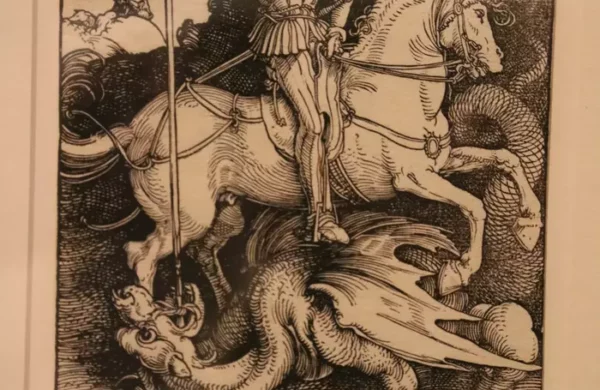
Dürer and Cranach, two Northern Renaissance artists, are remembered on April 6th. Dürer, the son of a goldsmith, apprenticed as a painter and printmaker, gaining fame for his woodcuts and paintings. He created portraits of notable figures like Erasmus and read Luther’s writings. Cranach, the Elder, had less known formal art training but became the court painter of Wittenberg by 1505. He used various mediums, witnessed Luther’s marriage, and engaged in business ventures, producing works with both Protestant and Roman Catholic themes.
Like this:
Like Loading...
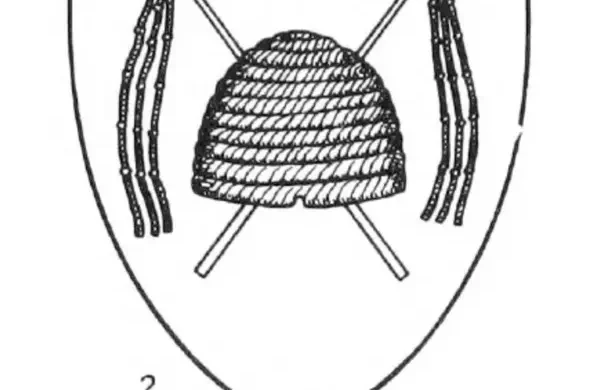
Born as Aurelius Ambrosius in 334 A.D., the man we know as St. Ambrose grew up in Gaul where his father held a high post as prefecture. It is said that a swarm of bees visited the infant Ambrose, landing upon his eyes and lips. This tradition claims to be the source of Ambrose’s ability later in life to speak in honeyed, caring words. So, the beehive has become the symbol most frequently associated with St. Ambrose because it is a symbol of eloquence. The symbol for St. Ambrose relate to the ex-communication of Emperor Theodosius for his massacre of the people of Thessalonica.
Like this:
Like Loading...
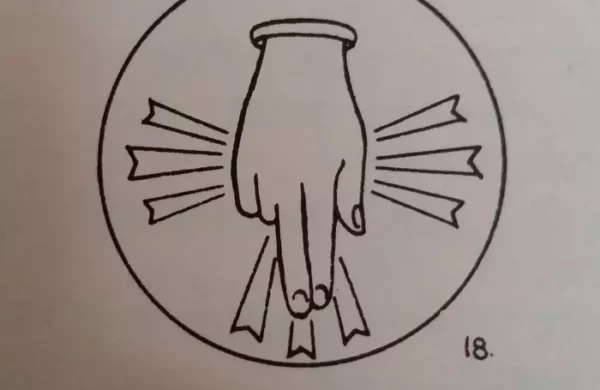
Each renowned saint has his or her own symbol in ecclesiastical sewing. A church that is named after a blessed saint can place that saint’s symbol on a piece of ecclesiastical vestment. All Saints Day, is the celebration of all of the Christian saints. During the mass persecutions, saints were martyred and there was no way to keep track of them all and mark each day as their own saint’s day. And so All Saints Day is the day we remember them. We decorate our churches in white, which reminds the feasting eyes of the congregation of the triumph of the saints, washed of their sins and made as white as snow by the all-availing sacrifice of Christ Our Saviour.
Like this:
Like Loading...
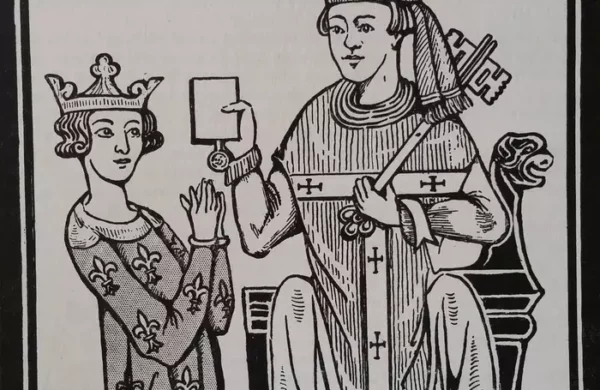
In the thirteenth century, the papal tiara evolved with a cone shape, growing taller. The peak had an egg shape, and the bottom was adorned with a headband. Styles included vertical or crisscross bands of gold, while the cap remained white linen or cloth of gold. Gems and pearls adorned the tiara. St. Gregory is depicted wearing a thirteenth-century tiara with a vertical band, while Pope Clement IV’s tiara had crisscross bands. Clement, presenting the crown of the Two Sicilies, wore a gold tiara adorned with jewels and fleurons.
Like this:
Like Loading...
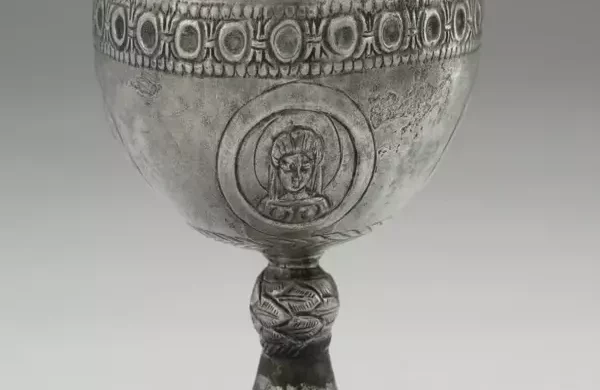
The Cleveland Museum owns four pieces of liturgical vessels from circa 500-700 A.D. This set was discovered in Northern Syria, where early Christians would have buried their precious goods from the invading Persians or Arabs. There are three chalices and one paten in this set. These are all silver; and the chalices are decorated with Saint Peter, Saint Paul, Christ, and the Blessed Virgin. The collection was given to a priest named Zeno by Kyriakos son of Domnos.
Like this:
Like Loading...
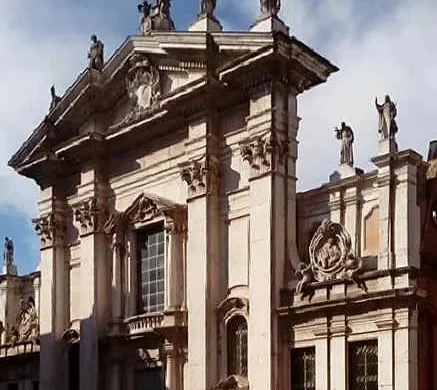
Beautiful ecclesiastical vestments, church art, and church architecture are not reserved for world-renowned cathedrals. Beauty is often found in places where worship still takes place on a healthy and active basis. This is because precious treasures can be found still in their original use instead of cased up–as if entombed–for tourists to view for thirty seconds before moving past.
Like this:
Like Loading...
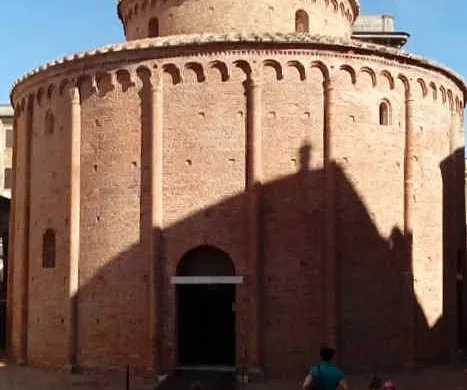
The Rotonda of Saint Lorenzo, which was dedicated to St. Lorenzo. – The building of this church was started in 1083 A.D. and finished around 1115 A.D.
Like this:
Like Loading...
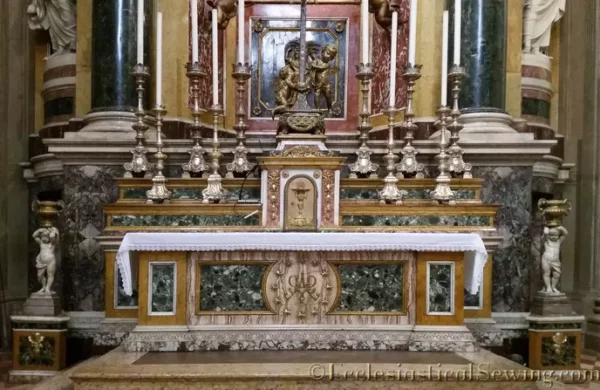
Altare Dei–The Altar of God Altare Dei–The Altar of God: Upon entering the sanctuary of a Christian Church, those coming to worship immediately have their gaze directed toward a… Read more Altare Dei–The Altar of God →
Like this:
Like Loading...
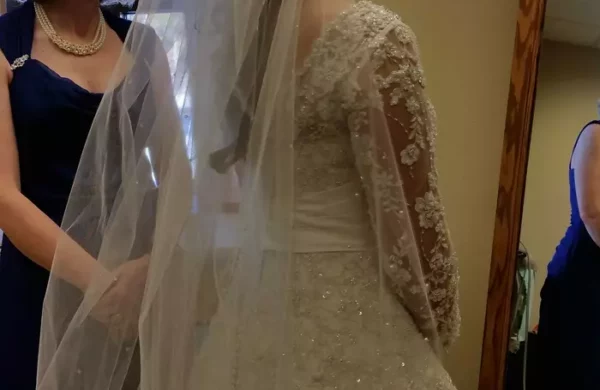
Ecclesiastical Sewing would like to officially welcome Ashley Zerwas to our team. Ashley is Carrie’s only daughter and she has taken a full-time job working for the family business after recently graduating college. When the Ecclesiastical Sewing storefront opens, Ashley will be helping to run the business behind the scenes. Ashley will manage social media, as well as assist with product development and sourcing. Ashley will also take on the role of Editor in Chief for Ecclesiastical Sewing.
Like this:
Like Loading...
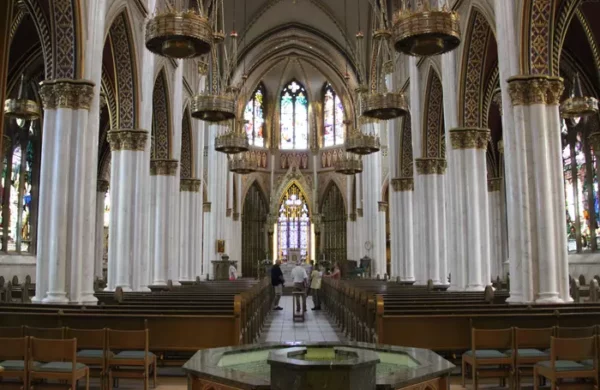
Visiting a grand Cathedral – The Cathedral of St. Helena in Helena Montana a stunning example of the masterful use of church design.
Like this:
Like Loading...
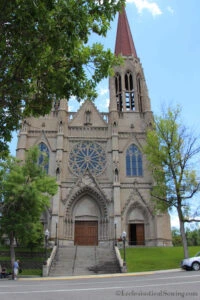
The capital of Montana is Helena. The cathedral’s entrance features impressive stone carvings, and the interior is grand with rich burgundy tones, metallic gold paint, and brass fixtures. The stained glass windows, numbering over 75, exhibit meticulous detail, resembling painted scenes with fine facial features, expressive eyes, and a heavenly gaze.
Like this:
Like Loading...
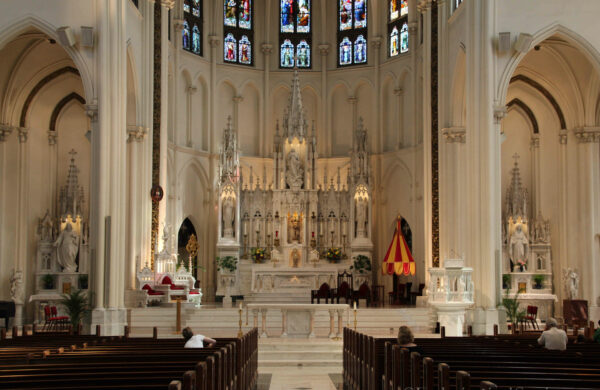
The altar in the Mary Chapel allows a closer view of the altar linen. The edge of the linen is cut so that it hangs over the front of the altar by a few inches. This linen edge is embroidered using the colors of white and gold. There is so much white inside this Basilica. The gold provides a much-needed contrast so the altar linen is not lost among all of the other whites of the chapel. The design motifs of the altar linen feature a cross worked in gold embroidery thread, and a wheat and grape motif worked in white embroidery thread. The edge of the altar linen is scalloped with a scalloped or shell satin stitch, making a perfect complement to this lovely Basilica
Like this:
Like Loading...

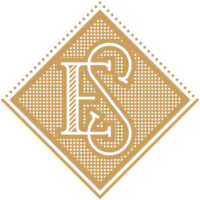














You must be logged in to post a comment.